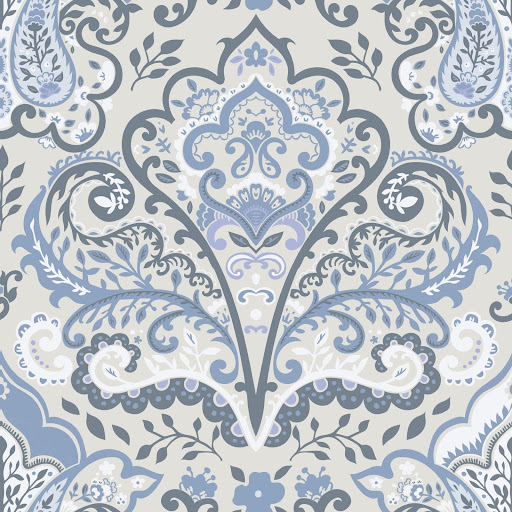As an avid arts and crafts enthusiast with a deep love for the paisley print, I’ve discovered a fascinating intersection between this timeless pattern and the world of art therapy. Today, we’ll explore how the intricate swirls and curves of paisley can be used as a powerful tool for relaxation and mindfulness.
The History and Significance of Paisley
Before we dive into its therapeutic applications, let’s briefly touch on the rich history of the paisley pattern. Originating in Persia, this teardrop-shaped motif has travelled across cultures and centuries, evolving into the beloved design we know today. Its intricate nature and endless variations make it a perfect subject for meditative art practices.
Paisley as a Mindfulness Tool
The complex, repetitive nature of paisley patterns makes them ideal for mindfulness exercises. When we focus on creating or colouring these intricate designs, we enter a state of flow, allowing our minds to quiet and our stress to melt away. There are several ways to incorporate paisley into your mindfulness routine. Adult colouring books featuring paisley designs can be a great starting point for beginners. For those more comfortable with drawing, creating paisley patterns from scratch can be deeply satisfying and meditative. You might also try combining the structured approach of Zentangle with paisley shapes for a unique mindfulness practice.
Art Therapy and Paisley
In art therapy settings, paisley can be used in various beneficial ways. The repetitive nature of creating paisley patterns can have a calming effect on the nervous system, effectively reducing anxiety. Concentrating on the intricate details of paisley can enhance attention span and concentration, improving focus. Additionally, the flowing lines and shapes of paisley can be a means of expressing complex emotions nonverbally, making it a valuable tool in therapeutic settings.
Getting Started with Paisley Art Therapy
If you’re interested in exploring paisley as a tool for relaxation and mindfulness, here are some simple steps to get started. First, gather your materials: you’ll need paper, pencils, and colouring tools of your choice. It’s best to start small, beginning with simple paisley shapes and gradually increasing complexity as you become more comfortable. Treat your paisley practice as a form of self-care and schedule regular sessions. Don’t be afraid to experiment with different mediums – try watercolours, markers, or even digital tools to find what works best for you.
Conclusion
Incorporating paisley into your art therapy or mindfulness practice can open up new avenues for relaxation and self-expression. Whether you’re a seasoned artist or a beginner looking for a new way to unwind, the timeless beauty of paisley has something to offer. So grab your art supplies, put on some soothing music, and let the calming swirls of paisley guide you to a more centred state of mind.
Happy crafting and mindful creating!
Written by Alan Boal Paisley

